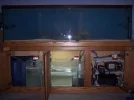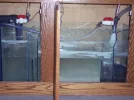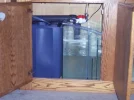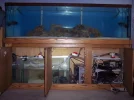andysgirl8800
Blenny Badlands
I finally have water in my tank and I am attempting to adjust the water flow between my main tank, skimmer, and refugium, without success. I have been tweaking it for the last three days, and can't seem to find the right combination.
I have twin Durso-style standpipe drains, emptying into a seperate bucket in which my mag pump sucks water into my skimmer. The skimmer does its thing, then pumps back into my refugium. My return pump sits at the end of the refugium and pumps back into my tank via two return lines. No matter how tiny or big my adjustments are, I can't get a stable water level. I am either slowly emptying my sump/refugium, or I am close to flooding it. I have to keep turning the entire system off at night because I am too concerned that my system will flood overnight. I am also too worried to leave the house with it running for longer than an hour or so.
Does anyone have any suggestions?? Am I missing something? Thanks.
I have twin Durso-style standpipe drains, emptying into a seperate bucket in which my mag pump sucks water into my skimmer. The skimmer does its thing, then pumps back into my refugium. My return pump sits at the end of the refugium and pumps back into my tank via two return lines. No matter how tiny or big my adjustments are, I can't get a stable water level. I am either slowly emptying my sump/refugium, or I am close to flooding it. I have to keep turning the entire system off at night because I am too concerned that my system will flood overnight. I am also too worried to leave the house with it running for longer than an hour or so.
Does anyone have any suggestions?? Am I missing something? Thanks.





